Contents
Electrical energy makes life easier for all of us. Now a person is surrounded by just a huge number of devices operating from the electrical network.
However, this source of energy is dangerous for humans, more precisely, one of its parameters is dangerous – the current strength.
Voltage and frequency of current, dangerous or not?
Its voltage and frequency are much safer than current.
For example, an automobile ignition coil at the output generates an electrical impulse with a voltage of 20-24 thousand V, but due to the very low current strength, such an impulse is not dangerous for a person, the maximum that it causes is an unpleasant sensation.
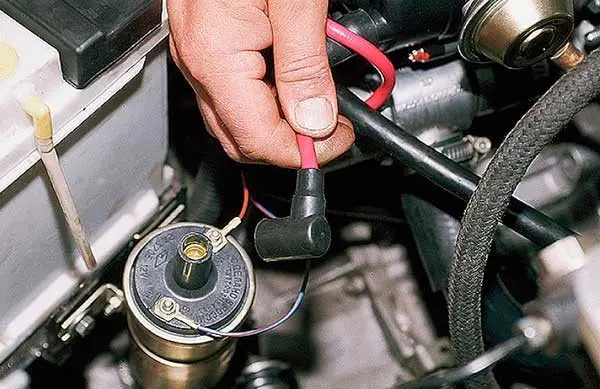
But if the current strength was much greater in the coils, this impulse would be fatal to a person. Therefore, it is said that “kills the current.”
The impact of current on the human body depends on many parameters, and first of all, it is its strength and type (constant, variable).
Also, the impact depends on the time of contact of a person with a source of electricity.
A person’s susceptibility to exposure, his physical and emotional state also affects.
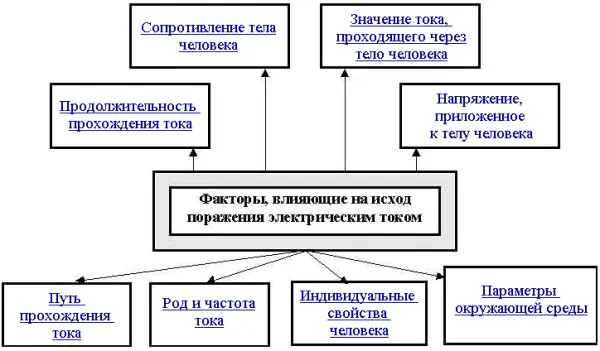
If one person can practically not feel the action of a current of a certain strength, then the second one can already feel this value, and strongly.
The path of passage of an electric discharge through the body is also important.

The most dangerous is the path through the central nervous system, respiratory organs and heart.
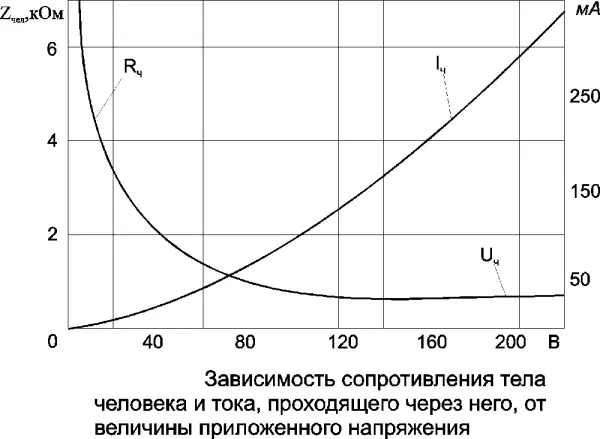
The impact of current of different magnitudes on the body
The minimum value of the current strength, which becomes perceptible to a person, is 1 mA. But again, this value depends on the susceptibility.
With an increase in this parameter, unpleasant pain sensations appear, the muscles begin to contract involuntarily.
Up to 12-15 mA, the current strength is called detachable. A person is able to independently break contact with the source, although when the parameter approaches the specified values, it becomes more and more difficult to break contact.
Above 15 mA, the current is considered non-breakable, the person is not able to break the contact himself, third-party help is required.
When the parameter is increased to 25 mA, the muscles at the point of contact are completely paralyzed, and this is accompanied by very severe pain, and breathing becomes more difficult for a person.
A current of up to 50 mA, in addition to very severe pain and muscle paralysis, is accompanied by respiratory paralysis and a decrease in heart activity, a person loses consciousness.
A current value of up to 80 mA leads to respiratory paralysis in a few seconds of exposure, with longer contact, cardiac fibrillation is possible.
100 mA very quickly leads to fibrillation, and then to cardiac paralysis.
A current of 5A instantly leads to respiratory paralysis, the heart stops for the time the person contacts the source, burns form at the contact point.
See also:

Types of impact
There are several types of effects that electric current can have on the human body.
Thermal.
The first type is thermal exposure. With such exposure, burns appear on the skin, it can affect tissues, blood vessels overheat, and the organs’ performance is disrupted along the current path.
Chemical.
The second is the chemical effect. It is accompanied by the occurrence of electrolysis of fluids inside a person, blood and lymph are split, which leads to a change in their physical and chemical composition.
Mechanical.
The third effect is mechanical. With it, a rupture of human tissues occurs, cracks in the bones may appear.
Biological.
The last type of influence is biological. The impact of current leads to convulsions of muscles and organs, disruption of the activity of organs up to the complete cessation of their functioning.
Types of electrical injuries
Electrical injuries that can cause an electric current to the body are divided into external and internal.
There are several external electrical injuries. The most common herbal is burn. Most electric shock injuries result in burns.
However, there are other types of electrical:
- Signs – have an oval shape and appear on the skin in the form of spots of pale yellow or gray. Since the skin at the site of contact dies upon exposure, the signs are not painful, the area of skin hardens somewhat and eventually disappears;
- Metallization is the transfer of wire metal particles to the skin as a result of an electric arc that appears between the wire and human skin. The area of the skin where metallization has occurred is painful, the affected area takes on a metallic hue;
- Ophthalmia is the effect of ultraviolet rays of an electric arc on the membrane of the eye, which causes it to become inflamed. Accompanied by the appearance after a while of severe pain in the eyes, lacrimation. After a while, the discomfort disappears;
- Mechanical damage – when exposed, emerging muscle cramps can lead to rupture of tissues, blood vessels, skin.
Internal injuries in a strike are due to electrical shock.
When the current passes through the internal organs, their tissues are excited, which is accompanied by a malfunction.
Electric shock is the most dangerous type of defeat.
Degrees of influence of current on the body
The impact of electric current on the human body has a certain classification, which is divided into 4 degrees.
First degree – the impact on a person of a source of electricity with a low current strength, at which involuntary muscle contraction occurs, but the person is conscious.
Second degree – the source of electricity has an average current strength, accompanied by muscle contraction, the person loses consciousness, but breathing and pulse are present.
Third degree – contact of a person with a source of energy with a high current strength, due to which paralysis of the respiratory organs occurs, and it is absent, and the work of the heart is also disturbed.
Fourth degree – the impact on a person of electricity with a very high current strength, in which breathing and heart work are absent, clinical death occurs.
accident prevention
To prevent a possible electric shock to a person, there are a number of rules prescribed in the safety and labor protection instructions.
So, work with electrical appliances should only be carried out with tools with protected handles that do not pass current.
Repair of electrical appliances should be carried out only after de-energizing them and removing the plug from the socket.
Repair of electrical networks should be carried out after a blackout. At the same time, appropriate signs are hung on the switches that have been de-energized.
When working with powerful devices, dielectric mats, shoes, gloves are additionally used.
And for children there are special electrical safety rules.

Assistance in case of injury
If a person is under the influence of an electric current, a number of certain measures are taken.
The first thing to do is to break the person’s contact with the source. This can be done by de-energizing the network or device with which contact has occurred.
If this is not possible, you need to pull the person away from the source, while you can’t touch the body, you need to pull it by the clothes.
If, as a result of muscle paralysis, the victim’s hand compresses the wire with the source, you should first cut the wire with a sharp object with a non-conductive handle, for example, an ax with a dry wooden handle.
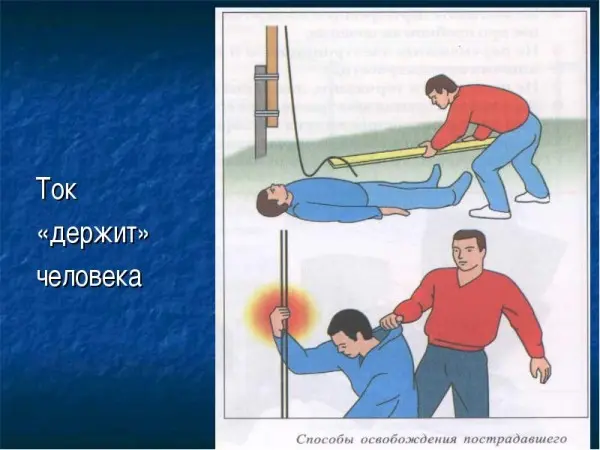
After breaking contact, first aid should be provided. If a person is conscious, he needs to provide a comfortable position for rest.
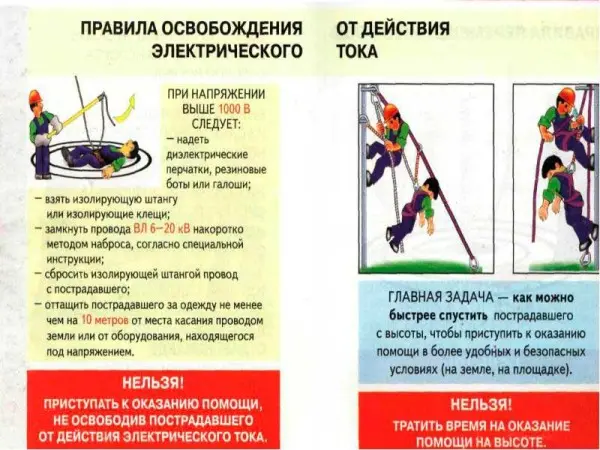
In case of loss of consciousness, but with the preservation of breathing, provide him with a comfortable position, unfasten the collar to ensure air flow, use ammonia to bring him to his senses.
Read more: Help with electric shock.
Upon the onset of clinical death, when there is no breathing and heartbeat, one should try to bring him out of this state by performing artificial respiration and heart massage. And of course, do not forget to call an ambulance.










Утсаа цэнэглэх гд цэнэглэгчнии үзүүр хэсгээс барьтал разетка коротколж том оч маналзаад гэриин пускател буусан бсан
Энэнии шалтгаан юу вэ